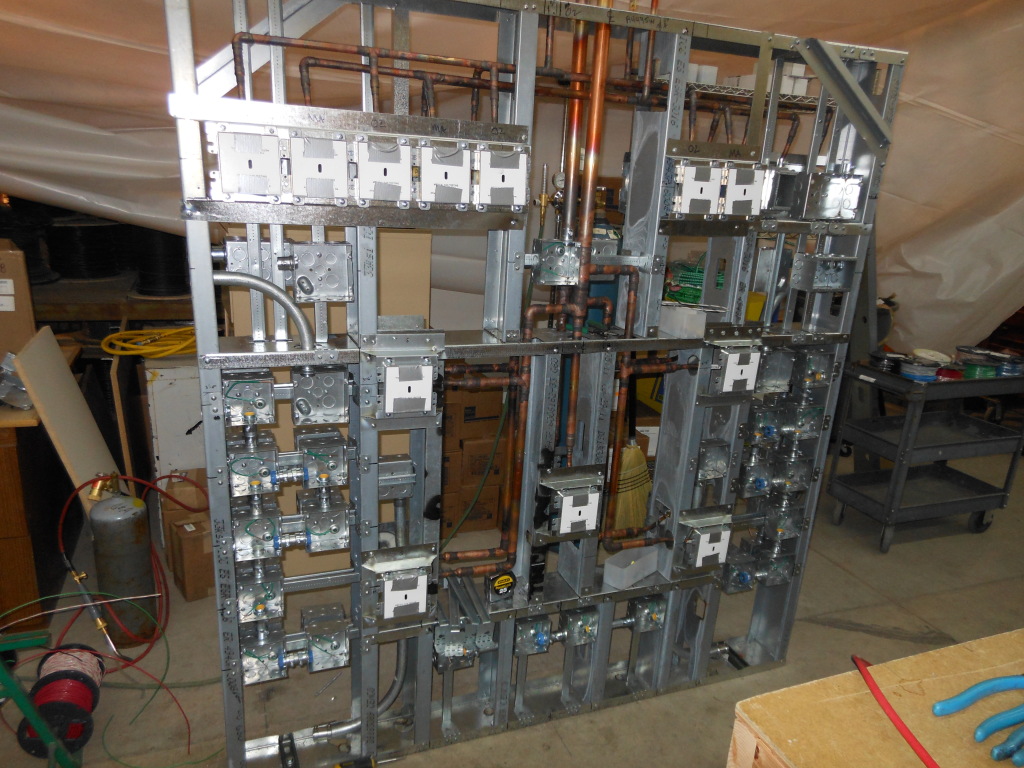As technology advances and buildings get smarter, more equipment and the systems that support them have to fit into the increasingly finite spaces available for sensors and control systems, sprinklers and HVAC, conduit and lighting fixtures, fire-alarm and data network cabling—to name a few.
Hence the value of preconstruction planning, three dimensional (3-D) modeling and especially of prefabrication in improving performance and safety. While 3-D modeling provides all important visualization of materials and tasks, prefabrication actually enables substantial offsite pre-manufacturing of subunits, allowing for example whole walls to be built and outfitted in advance with piping, conduit and data receptacles pre-installed, and then delivered just in time for final installation.

Patient room headwall as preassembled in the shop with data outlets, junction boxes and med gas piping in place and ready for just-in-time delivery and a simplified assembly process.
The Safety Advantages of Optimized Assembly
With prefabrication much of the assembly is accomplished on a fully optimized basis on the offsite equivalent of a factory floor. The upshot is that when some of the most complex tasks are performed in space specifically designed for fabrication, fewer people need to be physically present at the building site, reducing manpower requirements and making the construction site safer. Related to this is the fact that coordinated, just-in-time delivery of completed subassemblies takes pressure off of crews who, in a ceiling space for example, will spend far less time working ten feet above the floor, tied in to scaffolding—reducing risk of falls and other hazards.
Also, the onsite tasks in challenging spaces are made simpler, with much of the most demanding details performed in advance in the shop under optimal conditions without the distractions of a crowded job site. Add the fact that prefabrication is typically performed by specialists who have perfected key tasks whose repeatability creates a more uniform product. That in turn makes the final installation a simpler task, as each part comes to the installer nearly identical to the last, speeding up the process because there are no variances to deal with.
Simpler, faster and safer happen together, making prefabrication a major source of construction ROI, especially on large projects. Moreover, less storage and staging where the construction is performed reduces clutter, which means fewer chances for workers to trip over scrap metal, pipe or spools of wire—again promoting a safer work environment